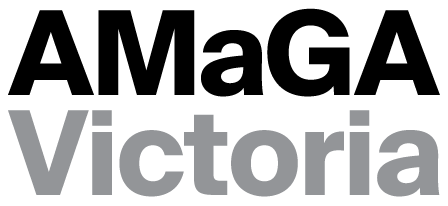
Photo: Joanne Francis | @nipawinnews

Bushfires
EMERGENCY CONTACTS
Emergency Recovery Victoria
This web portal is designed to connect individuals, families, communities, businesses and regions to rebuild and recover after a disaster. Please refer to the website for up to date information on what is happening in Victoria.
Environment Protection Authority AirWatch
If you or your employees are required to work outside or travel during times of bushfire, smoke from fires can affect air quality and provide a health and safety risk. Environment Protection Authority (EPA) Victoria provides information on air quality in your region and across the state via the EPA AirWatch webpage.
Vic Emergency
This website provides information and updates on current emergency warnings and incidents across Victoria. It also provides more specific advice and resources in line with significant current events.
Victorian State Emergency Service
Victoria State Emergency Service (VICSES) is a volunteer-based organisation that provides emergency assistance to minimise the impact of emergencies and strengthen the community’s ability to plan, respond and recover when emergencies occur. VICSES can provide emergency services for flood, storm, and landslides after bushfires. For emergency assistance call VICSES on 132 500.
GRANTS & ASSISTANCE
AICCM Emergency Assistance Grants
The AICCM offers a limited number of $1,000 Emergency Assistance Grants to conservators working in private practice to help triage, salvage, and stabilise small public or community collections affected by natural or man-made disasters. The funds can be used by the recipient to help cover the cost of their time, the cost of materials and supplies, or any other expenses incurred as part of disaster response and recovery work.
Australian Government Disaster Recovery Payment (AGDRP)
This is a one-off, non-means tested Australian government disaster recovery payment of $1000 for eligible adults and $400 for children. It is available to people who live in the Victorian flood impacted LGAs. Information about the payments, including all eligible local government areas is available on their website.
BlazeAid
BlazeAid is a volunteer-based organisation that works with families and individuals in rural Australia after natural disasters such as fires and floods. Working alongside the rural families, volunteers help to rebuild fences and other structures that have been damaged or destroyed.
Gippsland Emergency Relief Fund
GERF is a volunteer-run registered charity established to provide immediate short-term funds to Gippslanders affected by natural disaster. IT is funded by donations from businesses, with all donations returned to the community.
Local Councils
A number of Local Government areas across Victoria are in flood affected areas, prone to significant storm damage and prolonged power outages. You may wish to contact your local council directly to discuss whether they are providing additional financial or direct support assistance at this time.
Personal Hardship Assistance Program (Victorian Government)
The Personal Hardship Assistance Program helps people experiencing financial hardship in emergencies. The program includes emergency relief payments and re-establishment assistance. You can read more on the Victorian Government’s Financial Help page.
RECOVERY & CARE OF CULTURAL COLLECTIONS
Blue Shield Australia
Blue Shield Australia (BSA) provide a range of resources available to assist cultural and collecting organisations with flood recovery, and include a recovery checklist.
AICCM
The AICCM is a not-for-profit organisation concerned with the conservation, preservation, research of, and access to Australia’s tangible and intangible cultural, historical and scientific heritage. They have a range of disaster resources available, including a brochure on floods.
Grimwade Conservation Services (University of Melbourne)
Conservators at the University of Melbourne have developed a webpage and short video as a first response guide to recover flood damaged personal keepsakes, photographs, framed works, books, documents and other precious collection materials.
Volunteer Register / Requests for Assistance
Expressions of interest received from conservators to volunteer their time and /or services are collated by the AICCM Secretariat in a register. If members or organisations request assistance in regards to conservation of cultural heritage, AICCM offer to put people in contact with each other. Contact: secretariat@aiccm.org.au
Professional Conservator Directory
The AICCM has a directory of professional conservators available on its website.
OTHER RESOURCES
Asbestos and natural disasters
Following natural disasters, it’s vital that residential and commercial property owners ensure they manage asbestos safely to protect themselves, their families and their communities from unnecessary exposure to deadly asbestos fibres. Take a look at these recommendations.
Be Prepared
A Heritage Collections Council project, these guidelines were developed to help small museums and galleries to write a disaster preparedness plan.
Fair Work Ombudsman
The Fair Work Ombudsman provides advice on employment conditions during natural disasters and emergencies.
What do do after a natural disaster
MoneySmart breaks down a step-by-step plan for what to do following a natural disaster.
